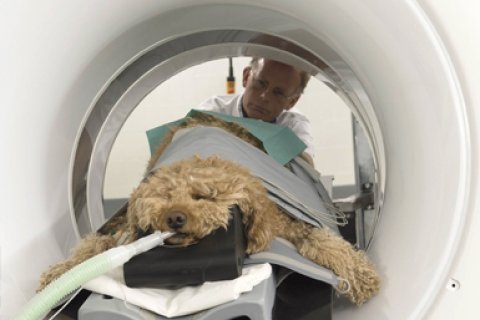Bone and Cartilage Regeneration
Motion is liberty; we work to restore freedom to our patients

Lower back pain is in humans the health problem with on average the highest incidence worldwide. Dogs also frequently suffer from back pain and even neurologic deficits as a result of disc herniation similar to humans.
Osteoarthritis
Another major problem of the musculoskeletal system is osteoarthritis. In humans, millions of artificial joints are implanted each year, resulting in an elevated economic burden for society. Even more so, 10-20 years after placing the first prosthesis quality of life reduces further many of these patients, as the prognosis for revision surgery is much worse than of the original intervention.
New therapies
Osteoarthritis is also a major issue in dogs and horses and even life-threatening in the latter species, because many horses are kept for their athletic potential and will be disposed of once such activity is no longer possible. The research programme on Regenerative Medicine therefore focuses on the discovery and development of new therapeutic approaches that can be applied in our veterinary patients and later on can be translated to the human clinic. New therapies can be medical, such as the controlled delivery of certain disease modifying drugs over a prolonged period using various modern delivery systems such as drug-loaded gels or microspheres, or surgical like the implantation of specially developed scaffolds that have been prepared using 3D bioprinting techniques to repair defects in joints or replace the damaged intervertebral disc.

From bench to bed
In order to develop and translate new treatment strategies for back pain and osteoarthritis, we combine our multidisciplinary background involving extensive experience with animal models (canine and equine experimental animals and veterinary patients) and the unique expertise for biomolecular techniques of “non-human species” like the dog and horse. In this respect we employ development biology and the unique divergence seen within the canine and equine species to identify regenerative targets by means of “omics”. We use results of in vitro and in vivo studies to design clinical directives and design experiments with the translation from bench to bed in mind.
MIRACLE-project: mid-infrared arthroscopy probe
The MIRACLE-project will take towards commercialisation the first mid-infrared (MIR) arthroscopy probe for in-depth evaluation of articular cartilage, enabling early diagnosis of degenerative joint diseases.


